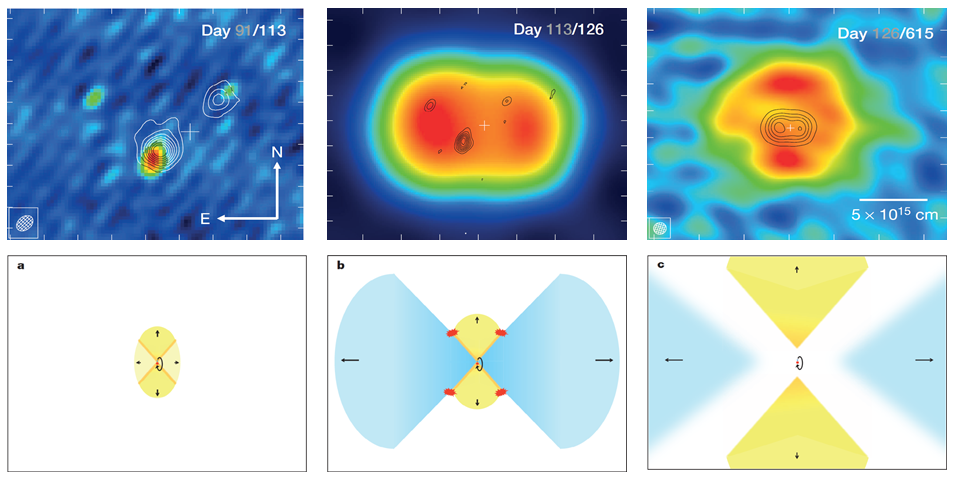Daily Image
09-10-2014Sharp radio images unravel the mystery of gamma rays in stellar explosions
| Submitter: | Zsolt Paragi |
| Description: | Novae are stellar explosions in binary star systems where a dense white dwarf accretes material from a companion star and this eventually triggers a thermonuclear explosion. These explosions have been known to astronomers for a long time, but it was not expected that they would produce very high-energy gamma-ray emission. Therefore, it came as a surprise when Nova Monoceros (V959 Mon) was detected by NASA's Fermi spacecraft in June 2012. This event was followed-up by a number of radio telescopes, including the European VLBI Network (EVN), e-MERLIN in the UK, as well as the Karl G. Jansky Very Large Array (VLA) and the Very Long Baseline Array (VLBA) in the US. These produced very high-resolution images of the exploding ejecta that helped solve the mystery of where the gamma ray emission was produced. The results were published in the prestigious journal Nature, by a group led by Laura Chomiuk (Michigan State University). For more details, see the JIVE press release. The upper panels of the figure show radio images of V959 Mon. The EVN images on 91 days and 113 days after the nova explosion are shown in contours and colour scale, respectively. The compact ejecta are shocks that produced relativistic electrons as well as the observed gamma rays. In the centre, the VLA image on day 126 (colour scale) shows east-west expansion of hot gas (apparently offset from the orientation of the structure observed by the EVN, overlaid in contours). The VLA image to the right on day 615 (colour scale) shows a structure dominated by a slow outflow of thermal gas expanding in north-south direction. The lower panels explain the various stages of the explosion: a) immediately following the thermonuclear runaway, the nova envelope expands and interacts with the binary system, yielding dense material in the equatorial plane. b) the white dwarf powers a fast wind that is funnelled towards the low-density poles, causing shocks. c) once the white dwarf wind ceases, the polar outflow will detach from the binary and quickly drop in density as it expands, while the slower-expanding equatorial material will remain dense. |
| Copyright: | Chomiuk et al. (2014), Nature |
| Tweet |  |
